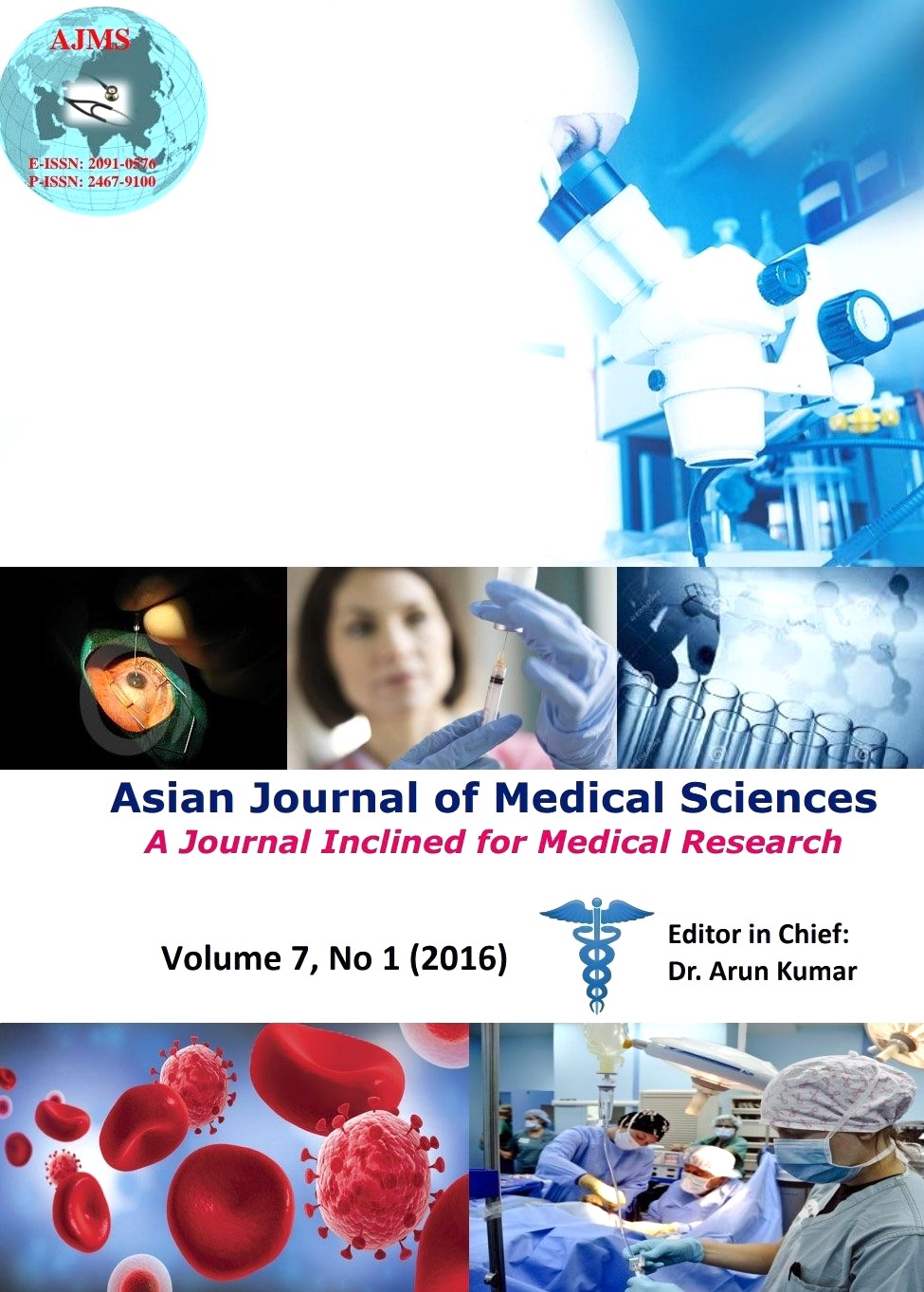Correlation of Iodine content of mother’s milk and urine with their child’s TSH level
Keywords:
Iodine, Milk Iodine Concentration, Lactating, Correlation, Thyroid Stimulating HormoneAbstract
Background: Iodine deficiency is still a significant public health problem. In the rural plains of Nepal, it remains a mild-to-moderate public health problem among pregnant and lactating women despite the availability of iodized salt. To date, only limited attention has been paid to breast-milk iodine content despite its importance in the intellectual development of infants.
Objectives: (i) To determine iodine content in mother’s urine, mother’s milk and to measure their respective child’s TSH level. (ii) To correlate iodine content of mother’s urine with child’s TSH level and also mother’s milk content with child’s TSH level.
Setting and Design: cross sectional study in human using consecutive sampling technique
Materials and Methods: Mother’s urinary and milk iodine level was measured by Ammonium Persulfate Digestion Microplate method using Sandell-Kolthoff reaction in a sealing cassette (Hitachi, Japan) and child’s TSH by ELISA commercial Kit from Eliscan (RFCL, India) based on classical sandwich technique.
Statistical analysis used: Spearman’s correlation was performed in quantitative variables. A p-value less than 0.05 and 0.001 were considered statistically significant and highly significant respectively
Results: The median mother’s urine was 174.96 µg/L(97.39-215.43) and their respective median child TSH level was 3.86 mIU/L(2.66-4.80). Median mother’s milk iodine was 129.90 µg/L (94.14-165.94).There was significant negative correlation between mothers’ urinary iodine content and their child’s TSH (r2= -0.391, p = 0.005) and between mother’s urinary iodine and their child’s TSH (r2= -0.471, p = 0.001). There was positive correlation between mother’s milk iodine and mother urinary iodine but not statistically significant ((r2= 0.261, p = 0.067).
Conclusion: Mothers urinary iodine, mother’s milk iodine and child TSH are interrelated with each other.
Asian Journal of Medical Sciences Vol.7(1) 2015 40-48
Downloads
Downloads
Additional Files
Published
How to Cite
Issue
Section
License
Authors who publish with this journal agree to the following terms:
- The journal holds copyright and publishes the work under a Creative Commons CC-BY-NC license that permits use, distribution and reprduction in any medium, provided the original work is properly cited and is not used for commercial purposes. The journal should be recognised as the original publisher of this work.
- Authors are able to enter into separate, additional contractual arrangements for the non-exclusive distribution of the journal's published version of the work (e.g., post it to an institutional repository or publish it in a book), with an acknowledgement of its initial publication in this journal.
- Authors are permitted and encouraged to post their work online (e.g., in institutional repositories or on their website) prior to and during the submission process, as it can lead to productive exchanges, as well as earlier and greater citation of published work (See The Effect of Open Access).




